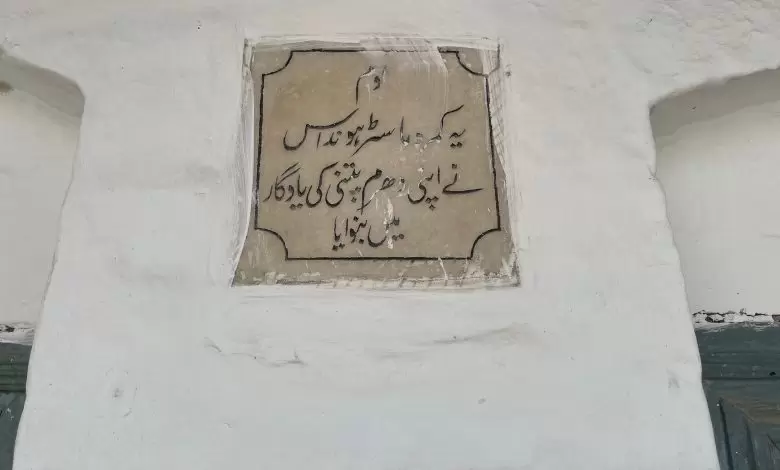
At a time when places of worship are becoming increasingly unsafe for Muslims in India and attempts are being made to erase the legacies of Muslim rulers, a small neighborhood in Pakistan’s Khyber Pakhtunkhwa province quietly preserves a powerful symbol of interfaith harmony.
In Lakki Marwat’s modest locality of Khwaidadkhel, a nearly century-old room built by a Hindu teacher in memory of his wife still stands strong—offering not only a glimpse into a shared past but also a reminder of peaceful coexistence.
Located within Government Primary School No. 1 Khwaidadkhel, the two-story building bears a plaque in Urdu that reads: “Om.. This room was built by Master Hondas in memory of his dharam patni (wife).”
Also Read: Transgender Performer Shot Dead in Malakand, Community Demands Justice
Though the plaque does not mention a year, locals and school staff believe the room was constructed before the partition of British India. Master Hondas, a Hindu teacher, had the room built to honor his deceased wife. More than a hundred years later, the structure remains intact and unaltered—an enduring relic of love and respect.
Officially opened on September 1, 1914, the school initially enrolled 19 students. While much of its early documentation was lost to termite damage, available records confirm this starting date. According to the current headmaster, Fida Ahmad Zakori, the school now has seven rooms, six classes, and five teachers, with nearly 200 students enrolled. He hopes, with community support, to increase enrollment to between 250 and 300 students in the near future.
Interestingly, the room built by Master Hondas is still considered special. The headmaster’s office is located on the lower floor of this historical structure to ensure its preservation and security.
Abdul Malik Khan, an elderly resident of Lakki Marwat, offers a rare oral window into a bygone era. Though he doesn't recall his exact date of birth, the days of partition are still vivid in his memory. He recalls how Hindu families, escorted by police, were brought to the railway junction as they prepared to leave. They took only essential belongings, leaving most possessions behind.
He remembers one poignant incident—someone placed a flatbread griddle on his head and said, “Take it, it’s yours now.” He also recalls taking a brass pot that he later buried in sand outside his home out of fear, never to find it again.
Abdul Malik grew up alongside Hindu and Sikh children, not just learning but also playing—and occasionally fighting—with them. "Whenever a fight broke out with a Hindu or Sikh child, we would form groups. There were more Hindu students in school than Muslims," he recalls, underscoring the complex yet intimate nature of inter-religious childhood interactions.
Abdul Malik’s father was a teacher, respected in the school and community. He recalls being a class monitor in Grade 4, studying alongside Hindu and Sikh peers. These memories reflect a time when children of different religions studied, played, and grew up together—sharing joys and sorrows with little regard for religious divides.
Today, the school and Master Hondas’ memorial room quietly preserve that spirit. This is more than just a room of bricks and mortar—it is a symbol of peace, tolerance, and love. It speaks of a time when people looked beyond religion, race, and language to share in each other’s humanity.
In an age marked by division and noise, the room built by a Hindu teacher in a Muslim-majority region is a whisper from history—one that deserves to be heard, respected, and remembered.